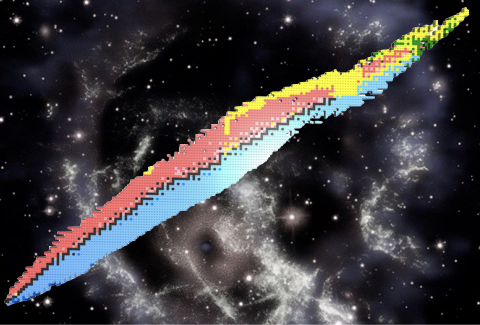
Our research at CIAFF focuses on:
Theoretical Nuclear Structure
We aim at understanding the structure of the nuclei with microscopic theories based on self-consistent mean-field and beyond-mean-field approximations combined with sophisticated nuclear interactions. These theoretical tools are used to compute nuclear properties such as binding energies, radii, excitation energies, decay modes, fission, etc., that can be compared with experimental data.
Nuclear astrophysics
We aim at describing the cosmic origin of the chemical elements observed in the Universe, as well as the nuclear processes that occur within and power astrophysical objects. In particular, we study the production of heavy elements during the so-called rapid neutron-capture process, which modelling requires the knowledge of thousands of exotic nuclei, most of which cannot be produced and/or measured in current experimental facilities.
For more information, you can visit the NT@UAM website.
